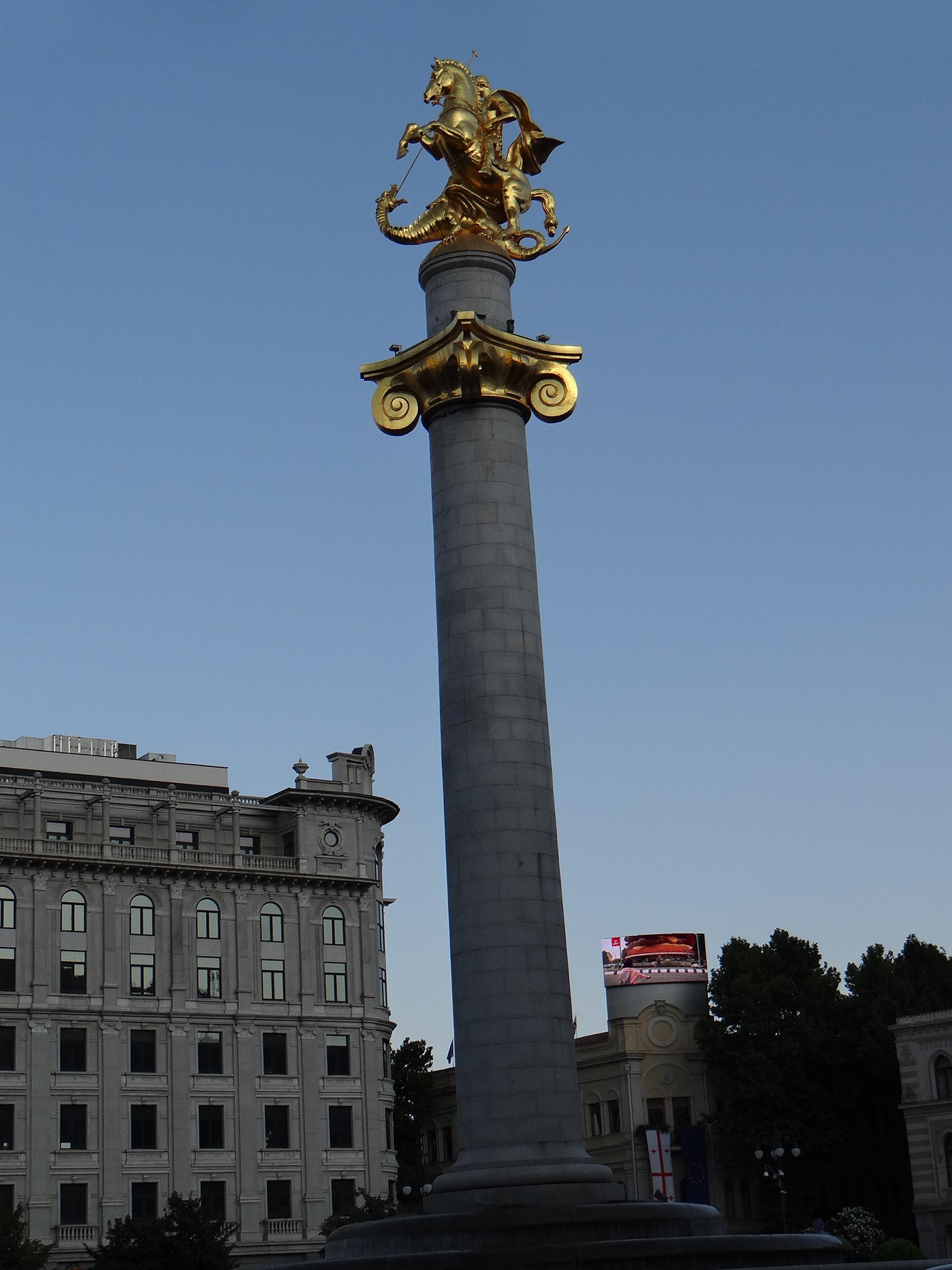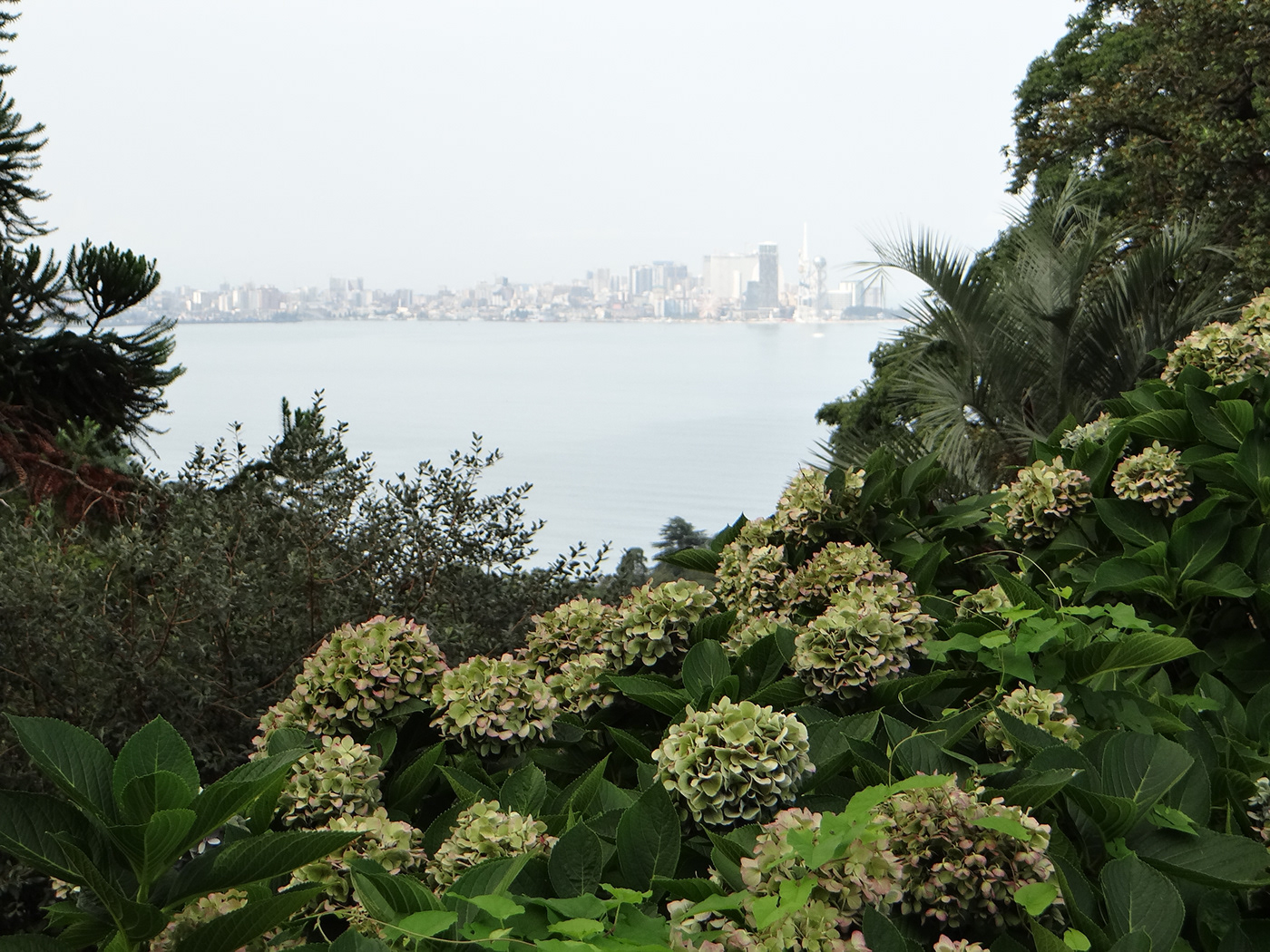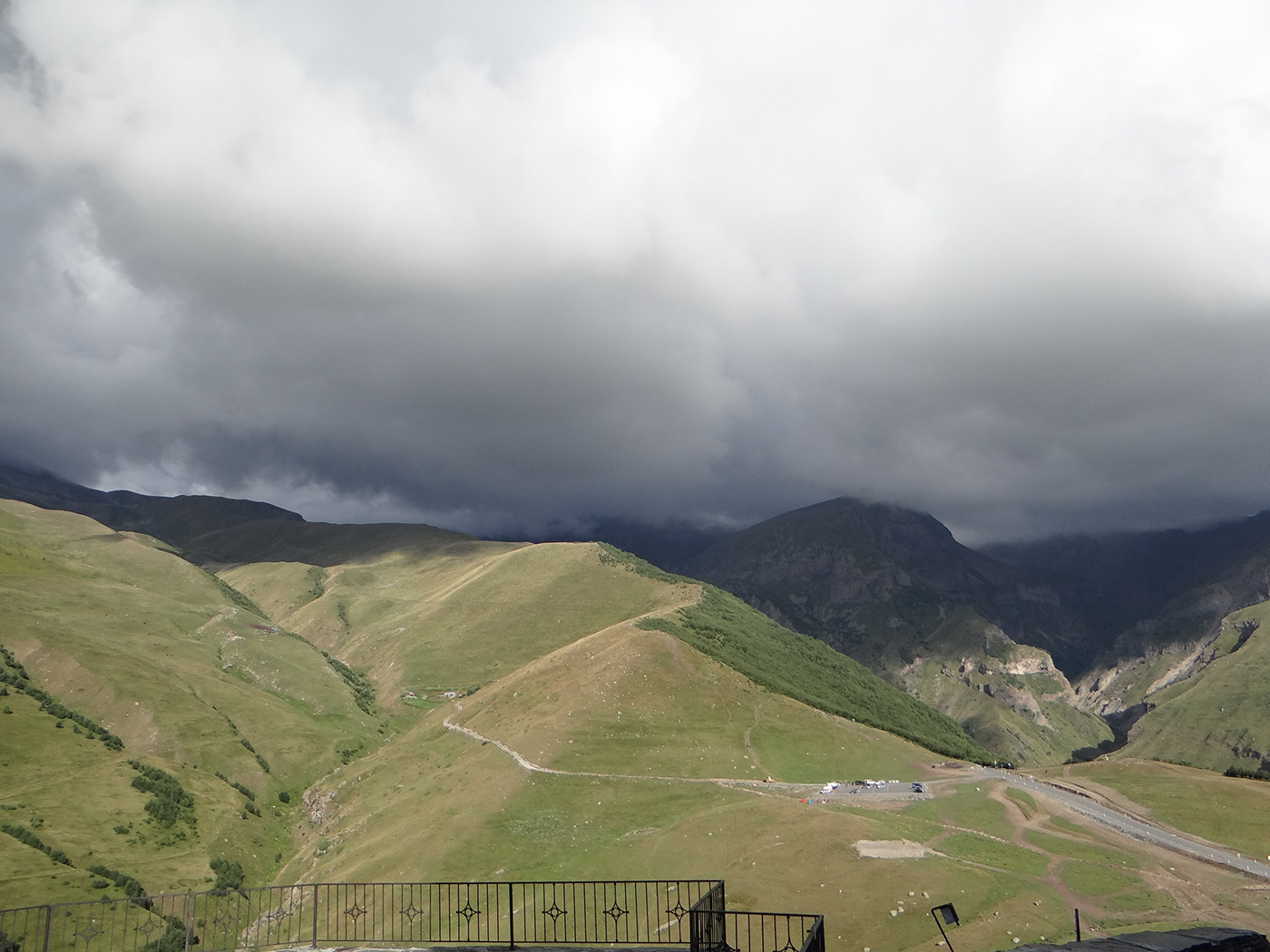Photo report of Georgia
Georgia
Gamarjoba, genatsvale! Everyone has probably heard this phrase at least once in their life. It concentrates the attitude of Georgians towards guests - respect, friendliness, generosity and kindness. A few years ago, we knew practically nothing about the wonderful country of Sakartvelo - the older generation remembered the former Soviet republic, but did not know what the country was doing now. Recently, Georgia has become a real discovery in the field of tourism! This is not surprising, because it is a country of dizzying mountains, endless sea, healing air, breathtaking history, heady wine, oriental flavor and unimaginably friendly people. Holidays in Georgia will appeal to the most demanding tourists who want to discover new experiences, because during the trip you will not even notice where history ends and modernity begins, how colorful Georgian notes are woven into the modern melody of city life, you will be pleasantly surprised by the realization that that the legends of welcoming Georgians are not fiction at all.

Climate of Georgia
The climate in Georgia is diverse - raw mountain and cold in the Caucasus, dry steppe in the eastern part of Georgia, and warm, humid subtropical on the Black Sea coast.
In Svaneti, winter lasts almost eight months, the average winter temperature is -15 degrees Celsius, and in Javakheti, the temperature sometimes drops to -30 degrees Celsius. On the coast in Adjara, the January temperature is from +5 to + 23, but August is usually the warmest month in this region - the temperature can rise to +35 degrees Celsius. In Eastern Georgia, temperatures are also diverse - in January, about 0 degrees, in late summer to +24, the average annual temperature is +12 degrees Celsius. In the south of the country in January it is about -2, in August it is about +23, and the average annual temperature is +10.
In Svaneti, winter lasts almost eight months, the average winter temperature is -15 degrees Celsius, and in Javakheti, the temperature sometimes drops to -30 degrees Celsius. On the coast in Adjara, the January temperature is from +5 to + 23, but August is usually the warmest month in this region - the temperature can rise to +35 degrees Celsius. In Eastern Georgia, temperatures are also diverse - in January, about 0 degrees, in late summer to +24, the average annual temperature is +12 degrees Celsius. In the south of the country in January it is about -2, in August it is about +23, and the average annual temperature is +10.

Georgia population
Georgia is a multinational state in which the majority of the population are the peoples of Transcaucasia. According to 2002 data, Georgians make up 83.8% of the total population, Azerbaijanis 6.5%, Armenians 5.7%, Russians 1.5%, other nationalities 2.5%. The major cities of Georgia - Tbilisi, Batumi, Rustavi - are traditionally multinational. The settlement of peoples in the territory of modern Georgia was influenced by historical conditions. So, in the late feudal era, Armenians and Azerbaijanis moved to Eastern and Southern Georgia, which now make up a significant part of the villagers there. In the 19th century, Armenians moved to the southern regions of Georgia and to many cities from Turkey. A number of Russian settlements in southern Georgia formed the Russian Old Believers pursued by the authorities. Western Georgia is distinguished by a more homogeneous ethnic composition, in whose villages Georgians live almost exclusively.




Georgian cuisine
National cuisine of the Georgian people. Most of the dishes and drinks which were invented in the ancient Georgian states of Colchis (Egrisi) and Diaoch in the second millennium BC. e. [source not indicated 51 days], they subsequently remained practically unchanged (Diohs: Shotispuri, Khinkali, Kharcho soup, Churchkhela, Kolkhskys: Suluguni, Khachapuri, Mzhave, Satsivi, Badrigani, etc.). Many of Georgian dishes, such as tobacco chicken, kharcho, khachapuri, are widely known in the world and have become international [source not specified 51 days].
Georgian cuisine is based on the contrast of spicy and spicy [source not specified 51 days]. Vegetables are widely used, both as an independent dish, and as a complement to meat dishes.
In Georgia, as in many countries of the world, there are regional cuisines, in particular, the cuisines of western and eastern Georgia differ.






Religion in Georgia
The main religion of Georgia is Orthodox Christianity. By the way, Georgia is the second country (after Armenia), which adopted Christianity as the state religion in 326 BC.
Despite the great veneration of Christianity in Georgia, they are very tolerant and with due respect to representatives of other religions. And there are a lot of them. These are mostly Muslims. Some Abkhazians, as well as Georgians of the southern and southwestern regions (Adjara, etc.) profess Sunni Islam. Most Azerbaijanis are Muslims. Assyrians in 80% profess Christianity. Armenians, Greeks and Russians have their own Orthodox churches. There are also a small number of Catholics in Georgia.
























Tbilisi
Have you been to a city where you can find Georgian Orthodox, Armenian Gregorian and Roman Catholic churches, a synagogue, a mosque and a Zoroastrian temple all within a 5 minute walk of each other? Then you should definitely come to Georgia and visit our capital Tbilisi – a multi-ethnic, multi-cultural, multi-religious city on the crossroads of history, a city neither European nor Asian but a heady blend of both East and West.Tbilisi was founded in the 5th century AD and has attracted visitors ever since, drawn by the hot springs for which the city is named, by the lively atmosphere of its cobbled streets and caravanserais or simply by what Alexandre Dumas called the “strange, fascinating charm” of this “city of legend and romance.”






This list can be long really.
First and foremost head to the Old Tbilisi and get lost in the maze of streets there.
Visit some of the amazing old churches (did you know Georgia was among the first countries that took Christianity as the state religion?), including Sioni Cathedral.
Take the cable car (or walk) to Narikala Fortress and while you are there say hello to Mother Georgia.
Go to the old baths. Hang out in the Rike Park and walk across the funky Bridge of Peace.
Walk down the Rustaveli Avenue to admire the splendid architecture. Go shopping at the Dry Bridge flea market and walk the Davit Aghmashenebeli Avenue.
And don’t even get me started with the Soviet architecture in Tbilisi! There are so many things to do in Tbilisi, really!






For those who like to absorb the atmosphere of the city during leisurely walks, the Old Town is ideal, in which practically nothing has changed over the past 200 years. Walking in the center of Tbilisi, you will see the church and the uncle on a horse on the opposite side of the Kura. The church is called Metekhi, and the uncle is the king of Gorgasali, who founded Tbilisi. According to legend, he hunted in local forests. The tsar’s falcon wounded a pheasant, fell with it to the source and boiled - the water was so hot. The king decided to found a city here and called it “Warm Place” - Tiflis (Tbilisi). You can go up to the church - from its observation deck a gorgeous view of the Narikala fortress opens.
The fortress of Narikala. The exact time of its foundation is unknown, but in the 4th century it already stood. Its towers offer the coolest views of the city, especially in the early evening. You can get on foot along a winding path or cable car for $ 1 one way. The cable car is open daily from 9am to 11pm.
From the Narikala fortress along the Botanical Garden in 10 minutes you will reach the monument to Mother of Georgia on the top of Sololaksky Hill. Mother of Georgia holds a sword in her right hand to meet those who came with the war, and in her left - a cup of wine for guests who came in peace.
Botanical Garden (Botanikuri 1). A great place to hide from the suffocating summer heat. A piece of the jungle in the city - there are, if not all, then many types of exotic plants from around the world. Vines hang, a waterfall rustles.
There is another funicular in Tbilisi - in Vake Park - and it is the longest cable car in the city. It offers views of the new buildings in the major districts of Saburtalo and Vake. Above the park are Turtle Lake and the Ethnographic Museum.





Mount Mtatsminda is another point to admire the capital. "Holy Mountain" is located on the right bank of the Kura River and rises above the city by as much as 740 meters. This is the same mountain that is sung in the song “Tbiliso”. At the top there is an amusement park starting at $ 1.75 and a restaurant complex (take donuts with vanilla cream and Ajarian khachapuri with thin edges). You can climb Mtatsminda by cable car for $ 1.5, or from Rustaveli metro station and Freedom Square by buses No. 124 and 90. You can climb the summit by stairs from the Ascension Church in Sololaki. The path is quite tiring (2 km), but interesting.
Fabrika (Egnate Ninoshvili 8). Georgian Berlin, a fashionable open-air space with a courtyard, in which in summer (and not only in summer) it is always crowded in the evenings. Hipster hostel, designer (and not very cheap) shops, burger and craft beer bars now occupy the space of a former clothing factory. Here you have to go to the party and to find out what the city plans for the weekend.
Sulfur baths (Abano) - one of the main attractions of Tbilisi. We remind you that according to legend, it is sulfur sources that the city owes its appearance. This is a whole quarter in the Old Town, where after a hard day in museums and fortresses you can relax. There are ten baths in all, they are distinguished by the price and amenities inside. Shared rooms cost a little less than $ 3 per person and work from 7am to 9pm. Individual rooms cost from $ 11 to $ 18 per hour rental (opening hours depend on the bath). The most beautiful (and most expensive) is the Orbelianovskaya (motley) bath, there are rooms for $ 200 per hour.
A river Tsavkisistskali flows near sulfur baths (try to pronounce!). You reach its end and voila - a waterfall (41.68674, 44.80903) right in the center of Tbilisi.
Grandfather En's Park is a city park next to the Dry Bridge. The park is small, but noteworthy: on Wednesdays there are day market and underground concerts. Mecca of local fashionistas. And here you can ride on a longboard - there is a skate park.











The dry bridge is, in fact, a bridge across the Kura River (Mtkvari) next to Ded En's Park. From the morning until noon, something like a flea market is formed on the bridge and the street branching from it: antique antique clocks, daggers, dishes, jewelry, lamps, coins. At the very end of the flea market, in the Park on March 9, young artists put up for sale their works. Really cool pictures come across here, so even if you do not plan to buy anything, just stop by to see.
On the way to Lake Lisi there is a rescue service building (Mukhran Machavariani Str), which neither give nor take - a flying saucer. You can take a photo in front of the building and tell your friends that ... anything.
If you suddenly need a sightseeing tour of the city, the famous red buses Hop On Hop Off and City Sightseeing ply in Tbilisi. The tour lasts 2.5 hours and costs $ 16 when buying a ticket on the site and $ 18 from the bus driver. The route begins on Rustaveli Avenue at number 52 and ends at the Sameba Temple.





What to buy in Tbilisi? There are more than two answers, but the main thing is the clothes of young Georgian designers and wine.
Most of the wineries are located in the Old Town. Here are some things to visit: Vinotheca (Leselidze 31), Wine Gallery (Tsinamdzgvrishvli 39), Vineria (Baratashvili 2) and the Vino Underground wine cellar (Galaktion Tabidze 15).
Tbilisi Mall (16 km Davit Aghmashenebeli) - a classic multi-brand mall.
East Point (Tvalchrelidze 2) is a small shopping area with boutiques and cafes. There are Zara, Bershka, New Yorker, but the locals, however, prefer LC Waikiki.
For designer gizmos, go to Fashion House Teona Elizbarashvili (Zandukeli 22, Paliashvili / Taqraqishvili), Avtandil (Leselidze 29; Kote Afkhazi 29) and Aka Nanitashvili Fashion Studio / Fashion House Aka Nanita (Paliashvili 43) and Tatuna Nikolaishaili (Shroi).
Chaos Concept Store (Merab Kostava 14) is a designer store in the same former printing house as the Rooms Hotel Tbilisi. Laconic T-shirts and sweatpants with stripes, sweatshirts, glasses and bags, and even the super-practical Wasserman vest - that's all there is. On Sundays, there are often cocktail parties dash garage sales.
On weekends, you can take a walk along Rustaveli near the Galleria shopping center - there, fashion startups sell various designer things, as well as notepads, jewelry and cute trinkets.



Batumi
Adjara is one of the most popular and beautiful corners of Georgia, located in the southwestern part, on the Black Sea coast. As an autonomous republic, it has its own flag and coat of arms, and borders on Turkey in the south.
Batumi, called the pearl of the Black Sea, is located in Adjara. It was built by European architects in the 1920s and today is a symbol of many architectural innovations.
Vacationers are especially attracted by the nature of Adjara, which is represented in various climatic zones and to this day has retained its original appearance.













Batumi is the personification of modern Georgia. Its beaches are equally flooded with Europeans, Russians and neighbors in the Caucasus, nightclubs host the best DJs in the world, hotels offer quality service, and restaurants serve delicious national cuisine. Among other things, they still love and wait for our brother, regardless of any political games.
Tourists in Batumi are attracted not only by good service, affectionate sun and beaches with clear water. The rich history of this place and interesting sights are also of interest. In addition, the city and the surrounding area have all the opportunities for outdoor activities - diving and water sports.
























Thank you for attention!
Travel and enjoy traveling, a different culture, countries and beautiful views.
Thank you for attention...







